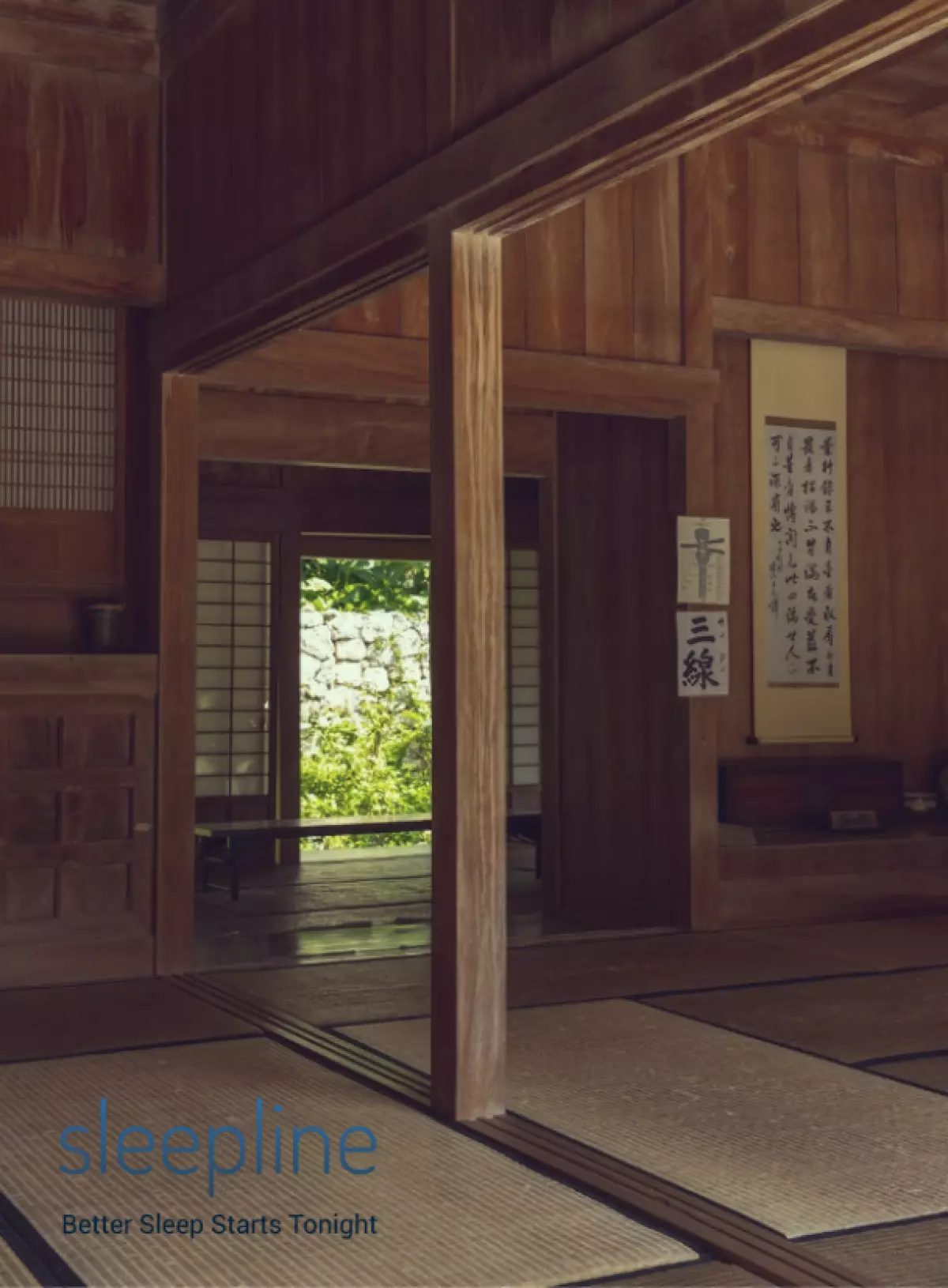Are you tired of the same old sleeping routine? Seeking a unique and traditional way of getting a good night's sleep? Look no further than a tatami mat! In this article, we'll explore the pros and cons of sleeping on a tatami mat and delve into what makes them such a fascinating sleep surface.
The Pros and Cons of Sleeping on a Tatami Mat
When it comes to sleeping on a tatami mat, the benefits outweigh the drawbacks.
Pros
Health Benefits
- Cool nights, no overheating
- Proper spinal alignment and good posture
- Alleviates back pain
- Improves breathing and blood circulation
Practical Benefits
- Tatami mats are cheaper than common beds and mattresses
- Easy to store away if you need extra room
- Simple to clean and maintain
A tatami mat provides a comfortable night's rest by ensuring your body is in a suitable position. Additionally, the cool sleeping surface promotes better sleep and improves overall health. Research suggests that cooler environments can enhance deep sleep, leading to improved blood pressure, mental acuity, physical performance, and more.
Cons
- Close proximity to the floor (may be problematic for dust mite allergies or those who dislike cleaning)
- Uncomfortable for side sleepers
- Not suitable for individuals with knee or hip problems who require taller beds
- May not be appropriate for certain conditions like scoliosis and kyphosis
If you have severe dust allergies, it's best to avoid sleeping on a tatami mat. However, regular cleaning can mitigate this issue. Side sleepers may find tatami mats uncomfortable, as it may lead to pain and misalignment of the spine. Individuals with specific medical conditions, such as scoliosis, should consult their doctor before sleeping on a tatami mat.
What's a Tatami Mat?
Tatami mats are traditional Japanese floor covers that add a touch of elegance to any living space. They are firm yet noticeably softer than the floor itself, providing a pleasant and natural feel. The unique material reflects light, enhancing the overall ambiance of the room.
 Japanese-style room
Japanese-style room
While tatami mats are not as common in modern Japanese homes, they were traditionally used in dedicated tatami rooms for sleeping. Over time, tatami flooring gained popularity and found its way into different areas of the home, including the kitchen, living room, and bedroom.
To maintain high standards of hygiene, it is customary to remove shoes upon entering a Japanese home, keeping the floors clean and conducive to sitting and sleeping.
What are Tatami Mats Made of?
Traditional tatami mats are crafted from eco-friendly materials. The core consists of rice straw fill, providing firmness, while the surface is made of tightly-woven rush grass for added comfort. The border is typically made of cotton, linen, or silk.
 Construction of a tatami mat
Construction of a tatami mat
Modern tatami mats may feature alternative cores, such as coconut, woodchip, or polystyrene. With a wide variety of designs and colors available for the border bands, tatami mats can enhance the aesthetics of your living space while providing comfort.
 Tatami mat border designs
Tatami mat border designs
The natural materials used in tatami mats contribute to a unique, grassy-earthy aroma. If you appreciate all things natural, this scent will surely delight your senses.
Tatami Mat Vs Futon
While tatami mats serve as thin and firm floor mats, a futon can be added on top of a tatami for a cozier sleeping experience. The word "futon" itself means bed in Japanese. A futon typically consists of a shikibuton (mattress), a makura (pillow), and a kakebuton (comforter).
 Tatami and Japanese futon comparison
Tatami and Japanese futon comparison
Shikibuton or shiki futon is different from a typical mattress. It is thinner and has a simpler construction. Usually filled with cotton, it can also contain fiberfill or wool. The quilted shikibuton is easy to fold, wash, and hang up to dry.
While the term "shikibuton" is often used interchangeably with "futon," it's essential to keep in mind their distinction when searching for a traditional Japanese-style bed.
FAQs
Can You Sleep Only on a Tatami Mat?
Absolutely! If you prefer super-firm sleeping surfaces and don't mind being closer to the floor, sleeping directly on a tatami mat is an excellent option. The tatami's coolness and ability to maintain spinal alignment can contribute to a comfortable night's sleep and improved posture.
Are Tatami Mats Good against SIDS?
Tatami mats and futon mattresses are commonly used in Japan, where the incidence of Sudden Infant Death Syndrome (SIDS) is low. While the sleeping surface may play a role, it's important to note that other factors, such as breastfeeding and non-smoking habits, also contribute to the low SIDS rates in Japan.
Are Tatami Mats Safe?
Tatami mats are safe for both adults and children. They are particularly well-suited for co-sleeping with toddlers, as the sleeping surface is already at ground level, eliminating the risk of falling from a bed.
What are the Benefits of Tatami Mats?
- Cooler sleep
- Improved blood circulation
- Reduced back and muscle pain
- Better alignment of the spine
- More room space (easy to store away)
- More affordable than common beds
Is it Bad to Sleep on the Floor?
Sleeping directly on the floor can be uncomfortable and may lead to soreness and discomfort in various pressure points. However, with the addition of padding, such as a mat, blankets, or a tatami mat, the experience becomes more tolerable, with proper alignment of the spine (unless you're a side sleeper). Furthermore, sleeping closer to the floor offers the advantage of cooler temperatures. However, it is essential to ensure a clean and hygienic sleeping environment to avoid potential issues associated with dirt, bugs, or mold.
That's it! You've now learned all about the joys and considerations of sleeping on a tatami mat. Embrace the traditional Japanese approach to sleeping and experience the unique benefits it offers. Sleep tight!

















